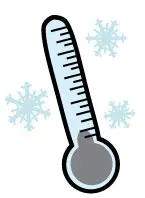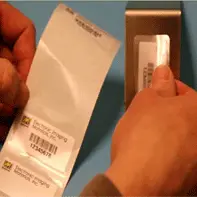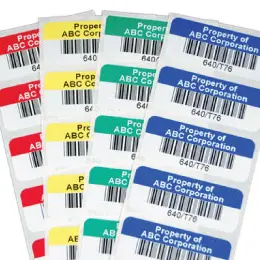Now in the dead of winter, many of us are dealing with record-breaking low temperatures, blizzards, and freezing rain that cause power outages, travel delays, car accidents and much more. Unusually cold weather patterns have brought unheard of conditions even to Southern states that are often unprepared to handle such challenges. 
When Electronic Imaging talks about winter weather we are thinking about the effects of cold temperatures on our label converting, storage conditions and label applications. For instance, a customer may tell us that they are having problems applying labels at room temperature (about 70F). Come to find out, their labels have actually been stored near a shipping dock where the temperatures can drastically drop. In some cases, their labels might have just come off the UPS truck after sitting in freezing temperatures for several hours. The cold temps make a label adhesive become firm and less tacky. In either case, we would warn this customer to let their labels warm up to room temperature before trying to use them so that they can be restored to their maximum bond strength. (We would not suggest however, that they keep them in an overheated space because that could cause the adhesive to dry out.)
Another factor to consider is how much humidity (aka relative humidity) drops in cold weather. Humidity is a lot lower in the winter than in the summer and this makes labels lose moisture and liners will start to shrink and curl. The colder it gets, the bigger this problem becomes so using a humidifier is highly recommended. You will find humidifying your storage and work areas will even reduce static when you go to print your labels. Like we advise for labels exposed to warm temperatures, keeping them in airtight plastic bags will help protect labels from moisture fluctuations.
It is important to understand that “storage temperature” is not the same as “application and service temperatures.”
• Standard storage recommendations are in the range of 72°F with 50% Relative Humidity – for just about ALL label materials.
• Application and service temperatures come into play when you peel labels off a liner and apply them to a surface. It is important to pay attention to (1) the MINIMUM application temperature when labels are placed on a surface and (2) the range of temperatures they may be subjected to when they are put into use. A general purpose adhesive is commonly rated for application at +40°F and has a service range of -40°F to 180°F but service temperatures can vary dramatically depending on the type of label material and adhesive under consideration.
Some labels have no problem with cold temperatures because that is what they made for. They have unique adhesives that work very well on cold–even frosty–surfaces; see our Freez-R-Mark® labels, for example. However, if the labels are stored incorrectly before they are put in use, you may find their ultimate performance can be affected.
Last to consider is, in what kind of environment will your labels be used? You really need to consider the surface temperature to which your labels are being applied because cold substrates, like metal or plastic, may not accept certain labels. For instance, if you were to put a label on an empty plastic pail that is going to be left outdoors in the winter, you may find the label puckers and wrinkles. This is because plastic tends to shrink more than labels in cold weather. With this in mind, you may want to avoid shipping plastic containers when shipping in the winter where they might get stuck in a cold truck for an extended period of time. You also need to make sure that your adhesive is rated for certain surfaces…in this case, a plastic bin made of low surface energy (LSE) plastic will require not only a special adhesive, but one that also handles low temperature application and service conditions.
 If you are having problems labeling in cold weather, contact our Label Experts to warm you up with the right labels to fit your needs.
If you are having problems labeling in cold weather, contact our Label Experts to warm you up with the right labels to fit your needs.




